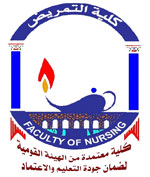Abstract: Background: Endometriosis is recognized as the ‘disease of young girls’ because it seems to be more common in
young girls. Early diagnosis is greatly essential to receive appropriate treatment and avoid complications. Aim of the study: to
evaluate severe dysmenorrhea for early recognition of endometriosis among adolescent girls. Subject and Methods: Crosssectional
descriptive design was used in this study. The study included 571 adolescent girls from 4 representative elementary
schools in Assiut city. A structured Questionnaire was developed by the investigators and included four parts: Part I:
demographic data; Part II: menstrual pattern: Part III. Pain history including: a. pain characteristics. b. Menstrual pain
associating symptoms: c. Pain level: using of Horizontal Visual Analog Scale (VAS) 0-10 points. Part IV: finding of Transabdominal
ultrasound (AUS) for those with severe dysmenorrhea. Field work: The study passed through three phases including
assessment, implementation, and follow up phases with a period of 7 months. Results: the majority of the girls were between
the age of 13 - 14 years. According to VAS, severe dysmenorrhea was reported in 68 girls (15%). Positive ultrasonography
findings suggestive of endometriosis were reported among 57.4% of girls who had severe dysmenorrhea. The majority (71.2%)
of those girls with severe dysmenorrhea responded to hormonal treatment while 28.2% not responded. There was a positive
correlation between number of symptoms associating dysmenorrhea and the pain level. Conclusions and recommendations:
Moderate and severe dysmenorrhea are common among adolescent. Those girls who had severe dysmenorrhea and more than
five symptoms associating dysmenorrhea might be suspected to have endometriosis. Further large scale study is essential with
the use of more informative investigations as MRI and laparoscopy to gain accurate estimate of the prevalence of the disease
and its types.
Keywords: Endometriosis, Dysmenorrhea, Adolescent Girls
Research Date
Research Department
Research Member
Research Vol
8
Research Year
2019
Research_Pages
197-205
Research Abstract

